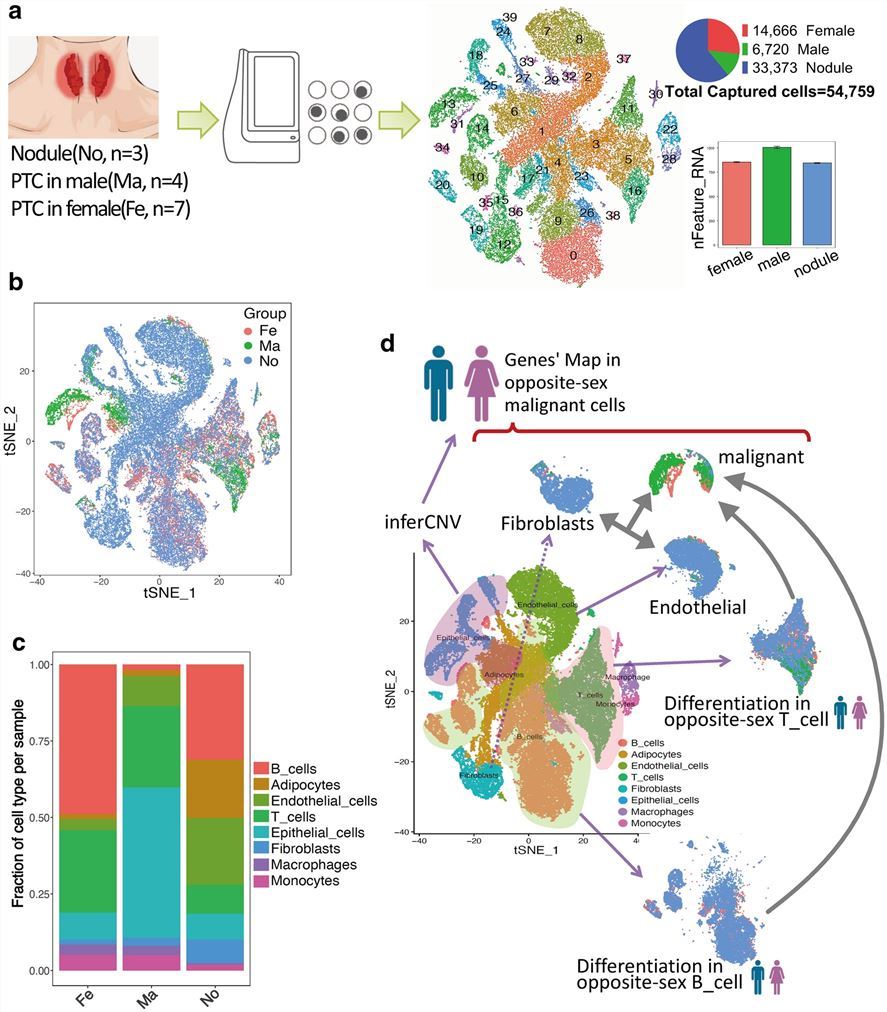Single-Cell and Exosome Combined Transcriptomic Research Service
Overview Services Features FAQs
Overview
Exploring Exosome Heterogeneity through Combined Single-Cell and Exosome Transcriptomic Analysis
Exosome heterogeneity has long been a key focus in exosome research. Traditional methods like PCR and RNA sequencing typically analyze transcripts by examining all exosomes together, providing a broad overview. However, this approach falls short when it comes to understanding the transcript composition within individual exosomes. To address this, it is essential to study transcriptome characteristics and heterogeneity at the single-exosome level.
Single-cell transcriptome sequencing (scT-seq) is an advanced technique that allows the sequencing of all transcripts within individual cells. This technology not only enables the study of gene expression in single cells but also helps overcome the limitations of traditional methods, which struggle to address cellular heterogeneity. By applying scT-seq to exosomes, researchers can investigate the unique transcriptomic features of individual exosomes, offering new insights into their behavior and functions. Furthermore, combining scT-seq with exosome transcriptomic analysis can help trace the origin and destination of exosomes, providing critical information about their role in cell-to-cell communication.
At Creative Biolabs, we offer a specialized service combining single-cell and exosome transcriptomic analysis, enabling clients to gain deeper insights into exosome function at the transcriptome level and uncover their full potential.
Services
By performing scT-seq on isolated exosomes, we can classify exosome subgroups based on differences in transcript levels. For example, one study analyzed extracellular vesicles derived from K562 cells and mesenchymal stem cells using scT-seq. The results revealed significant heterogeneity among these vesicles, even when derived from the same cell type. The vesicles were further divided into multiple subsets, each with distinct transcriptional profiles. These subsets may perform specific functions or collaborate to execute a common communication task.
This evidence suggests that scT-seq analysis of individual exosomes provides valuable insights into their mechanisms of action, helping to decode the complexities of cell signaling. At Creative Biolabs, our combined transcriptomic analysis services are designed to support researchers in uncovering these intricate mechanisms and advancing exosome-related studies.
 Fig.1 Transcriptome profiling of the three groups at the single-cell level.1,2
Fig.1 Transcriptome profiling of the three groups at the single-cell level.1,2
Features
-
Analysis of cell heterogeneity
-
Insight into tissue microenvironment
-
Revealing cell communication networks
-
Accurate biomarker discovery
Creative Biolabs has been committed to helping customers discover the various possibilities of exosomes to promote the transformation of exosome applications to the clinic. We can take the most suitable method to extract and identify exosomes from cell supernatants, body fluids, or tissues, and provide you with the most valuable exosome transcript profiles through scT-seq to help you discover the origin of exosomes or potential disease biomarkers. Please contact us to put forward your ideas, our professional team will provide you with the best research plan as soon as possible according to your research purpose
FAQs
Q: What samples are required from the client before performing the combined single-cell transcriptome and exosome transcriptomics analysis?
A: For exosomes, we can provide isolation services for exosomes derived from tissue, blood, or other body fluids. For single cells, we can guide you through the steps to extract a single-cell suspension, and then you can send us a sufficient amount of the single-cell suspension for analysis.
Q: Can the source cell of exosomes be determined through combined scT-seq and exosome transcriptomics analysis?
A: While absolute information about the source of exosomes cannot be obtained, the combined analysis of scT-seq and exosome transcriptomics can provide valuable clues for studying the donor cells of exosomes. By comparing the transcriptomic characteristics of exosomes and cells, clients can further determine which cell populations the exosomes are derived from.
Q: How much sample is required for exosome extraction and analysis?
A: The required sample volume for combined scT-seq and exosome transcriptomics analysis may vary depending on the type of sample and the research objectives. Generally, for exosome isolation, we recommend providing at least 1-5 ml of body fluid samples (requirements vary for different types of fluids) or 1-2g of tissue-derived single-cell suspension to ensure enough material for sequencing.
References
-
Peng, M.; et al. Single-cell transcriptomic landscape reveals the differences in cell differentiation and immune microenvironment of papillary thyroid carcinoma between genders. Cell and Bioscience. 2021, 11(1):39.
-
under Open Access license CC BY 4.0, without modification.
For Research Use Only. Cannot be used by patients.
Related Services:

 Fig.1 Transcriptome profiling of the three groups at the single-cell level.1,2
Fig.1 Transcriptome profiling of the three groups at the single-cell level.1,2









